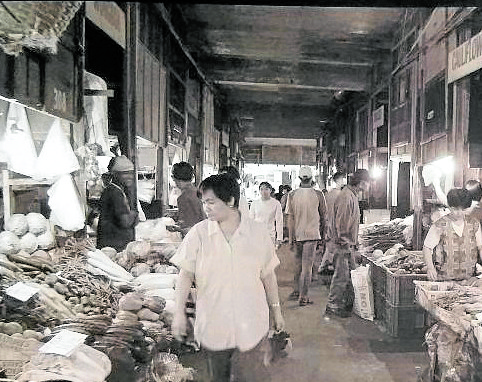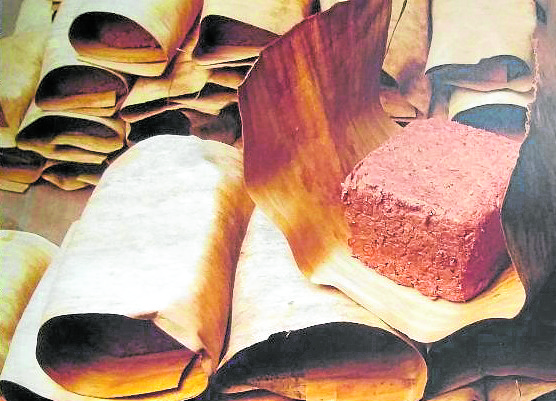
When I was growing up, the market, for me, was both the wet market of my father and the supermarket of my mother.
My father grew up in Bauang, La Union. The last time we went with him to the market there, the vendors would call out his name “Pabling, Pabling!” They still recognized him in his 60s. And they were still there when it was my nephew who strolled through the aisles and heard them call him “Pabling!”
My mother grew up in Manila, hence the predilection for the airconditioned, cleaner supermarket. Her favorite was the original Tropical Hut, where the meat was neatly cut and packed, and her favorite hamburger waited for her when she finished her shopping.
The wet market is my must place to research about local food. It shows the ingredients grown and used in the place. It introduces me to the people of the town. It is where I sometimes get my first taste of the cooking. And where I discover what is different about each market.

Huge tuna eyes
In Bicol’s Legaspi market, there are stalls that sell shredded vegetables. Strands of banana heart, bamboo shoots and cabbage await coconut milk to cook into many of Bicol’s vegetable dishes.
On my first visit to the Iloilo Central Market, mounds of fermented shrimp paste (bagoong alamang, guinamos) surprised me because I thought the guinamos was not as solid. More seasoned food writers then told me that Indonesian terasi is also solid. Vendors sell them by slice. A hint of it in a bachoy gives the pork soup its wonderful rich flavor.
In Davao, the most surprising sight was tuna fish eyes that were so huge, they seemed to follow you wherever you went. Fish eye is a favorite. One of my childhood pleasures is turning bangus eyes into pearl necklaces after the surrounding fat is eaten. I had eaten tuna eyes, but not as big as the ones in Davao. Later we had those staring eyes as sinigang, and just two of them were enough to make us full.
In Tawi-Tawi, many of the stalls were decorated with stuffed puffer fish. It is locally known as butete, and as fugu in Japan. Obviously the Tawi-Tawi people know how to remove the deadly poison, and don’t need a qualified Japanese chef to do it for them. The most unusual product, however, was kamunting, processed cassava that looks like puto (rice cake) that is a staple there instead of rice, and usually eaten with seafood.
‘Adik-adik’ crab
In Ilocos Norte, we expected the vegetables that define many Ilocos dishes, and they were there. But it is the freshly made miki noodles that distinguish the Ilocos market from other regional markets. We haven’t seen freshly done noodles anywhere else.
Lemery in Batangas is one of the livestock markets in the province. Cattle, pigs and goats are sold in the open air. Ropes are customarily bought for the purchased animals.
The best part is watching farmers eat their breakfast at the goto stalls around. Those sell stews of beef innards made orange by achuete (annatto) seeds. The Batangueño buyers should be watched for the unique way they eat. First they bite into a chili, sip the soup, then eat the meat pieces with rice. Just to demonstrate the frugality of Batangueños, it is said that they bring their own rice so they don’t have to buy the goto stall’s rice.
In Infanta, Quezon, the market sells a favorite of the place, sinantol—grated ripe santol flesh cooked in coconut milk, taken as is or with other ingredients mixed in like mud crabs, shrimp, beef, or fish called burao, matangbaka (purse-eyed scad), steamed and shredded. Also sold is a crab called pupukan with very red eyes whose claw tips are tinged red. The locals’ nickname for the crab is “adik-adik,” or addict in plainspeak.
I visit the Baguio market not just for the jams, the longganisa and the coffee whenever I am there. My mission is to find a marker that states that the original market before it burned down the first time was constructed by my father, a civil engineer.
Email the author at pinoyfood04@yahoo.com

